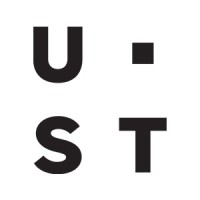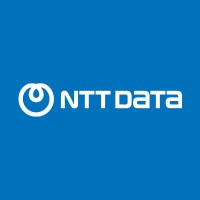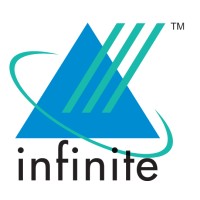Company Details
dimension-data
17,691
434,189
5415
dimensiondata.com
0
DIM_1978732
In-progress

Dimension Data Company CyberSecurity Posture
dimensiondata.comDimension Data is a leading African born technology provider operating in the Middle East and Africa, offering a portfolio of services including systems integration, managed services infrastructure, cloud solutions, business applications, customer experience, and intelligent security solutions. We provide innovative solutions that optimise today’s evolving technology environments, enabling clients to leverage data in a digital age. Founded in 1983, and headquartered in Johannesburg, Dimension Data is a proud member of the NTT Group, one of the world’s leading information communication technology (ICT) companies, comprising a group of global technology companies. In 2020, Dimension Data completed its transition to operate as one entity consolidating all its subsidiaries under a single Dimension Data brand employing over 10 000 employees across 15 countries. We continue to invest heavily in innovation bringing together the world’s best technologies, from consulting, technical and support services to a fully managed service. Dimension Data is currently a level 2 BBBEE contributor after successfully concluding a significant BBBEE transaction in 2019. Dimension Data will continue to implement strategies to ensure it contributes meaningfully to transformation towards an inclusive society.
Company Details
dimension-data
17,691
434,189
5415
dimensiondata.com
0
DIM_1978732
In-progress
Between 750 and 799

 Dimension Data Global Score (TPRM)
Dimension Data Global Score (TPRM)XXXX

Description: The cybercrime group **Coinbase Cartel** targeted **NTT Data**, a Japanese IT services giant, by exploiting vulnerabilities in its US subsidiary **Vectorform** (acquired in 2022). The attack involved **large-scale data exfiltration** without encryption, leveraging exposed credentials in cloud repositories (e.g., AWS, GitHub) and potential insider assistance. While NTT Data denied a direct breach, Vectorform’s systems were compromised, with sensitive operational, client, or proprietary data stolen. Coinbase Cartel employed a **‘leak-only’ ransomware model**, threatening public disclosure to extort payment while avoiding system disruption. The stolen data—likely including logistics, supply chain, or corporate intelligence—poses **reputational, legal, and financial risks**, particularly given the transportation/logistics sector’s reliance on third-party integrations (TMS, WMS, EDI). The breach underscores vulnerabilities in **vendor access controls, credential hygiene, and segmentation**, with the group staging leaks to pressure negotiations. No encryption occurred, but the **theft of high-value data** exposes NTT Data to regulatory scrutiny, customer distrust, and potential litigation, especially if client or employee records were exposed.


No incidents recorded for Dimension Data in 2025.
No incidents recorded for Dimension Data in 2025.
No incidents recorded for Dimension Data in 2025.
Dimension Data cyber incidents detection timeline including parent company and subsidiaries

Dimension Data is a leading African born technology provider operating in the Middle East and Africa, offering a portfolio of services including systems integration, managed services infrastructure, cloud solutions, business applications, customer experience, and intelligent security solutions. We provide innovative solutions that optimise today’s evolving technology environments, enabling clients to leverage data in a digital age. Founded in 1983, and headquartered in Johannesburg, Dimension Data is a proud member of the NTT Group, one of the world’s leading information communication technology (ICT) companies, comprising a group of global technology companies. In 2020, Dimension Data completed its transition to operate as one entity consolidating all its subsidiaries under a single Dimension Data brand employing over 10 000 employees across 15 countries. We continue to invest heavily in innovation bringing together the world’s best technologies, from consulting, technical and support services to a fully managed service. Dimension Data is currently a level 2 BBBEE contributor after successfully concluding a significant BBBEE transaction in 2019. Dimension Data will continue to implement strategies to ensure it contributes meaningfully to transformation towards an inclusive society.


UST is a global digital transformation solutions provider. For more than 20 years, UST has worked side by side with the world’s best companies to make a real impact through transformation. Powered by technology, inspired by people and led by purpose, UST partners with their clients from design to op

Accenture is a global professional services company with leading capabilities in digital, cloud and security. Combining unmatched experience and specialized skills across more than 40 industries, we offer Strategy and Consulting, Interactive, Technology and Operations services — all powered by the w

We Transform. SAP® solutions into Value We understand the business of our clients and know what it takes to transform it into the future. At NTT DATA Business Solutions, we drive innovation – from advisory and implementation to managed services and beyond. With SAP at our core and a powerful ecosys

GlobalLogic, una empresa del grupo Hitachi, es líder en ingeniería digital en Latinoamérica. Ayudamos a diferentes marcas a diseñar y crear productos, plataformas y experiencias digitales innovadoras para el mundo moderno. Al integrar el diseño de experiencia, la ingeniería compleja y la exper

Mastercard powers economies and empowers people in 200+ countries and territories worldwide. Together with our customers, we’re building a sustainable economy where everyone can prosper. We support a wide range of digital payments choices, making transactions secure, simple, smart and accessible. Ou

Infinite is a global leader in technology modernization, next-gen IT services and solutions, and digital engineering, with over two decades of experience helping clients turn digital transformation into business value. Leveraging an AI-first approach, we combine leading technologies, innovative plat

Engineering Group is the Digital Transformation Company, leader in Italy and expanding its global footprint, with around 14,000 associates and with over 80 offices spread across Europe, the United States, and South America and global delivery. The Engineering Group, consisting of over 70 companies

For 50 years, our nation’s federal Medicaid program has worked to improve the health, safety and well-being of America’s most vulnerable populations: low-income families, women and children, seniors, and those with disabilities. With positive health and cost outcomes that pierce inequities and impac

Luxoft, a DXC Technology Company (NYSE: DXC), is a digital strategy and software engineering firm providing bespoke technology solutions that drive business change for customers the world over. Acquired by U.S. company DXC Technology in 2019, Luxoft is a global operation in 44 cities and 21 countrie
.png)
On October, 28, 2025, the Standing Committee of the National People's Congress approved amendments to the Cybersecurity Law of the PRC (the...
Cyber security refers to technologies, processes, and rules created to protect computer systems, servers, networks, programs, and data from cyber-attacks.
Slipstream Cyber has announced the appointment of David Kaplan as General Manager – Cyber Security and Steve Macdonald as Director – Cyber Security Practise.
KOCHI: Amid Indo-Pak standoff, a report from a leading cyber-security threat intelligence platform stated that more than 500 Indian...
Explore the cybersecurity risks of modern vehicles, from remote hacks to vulnerabilities in autonomous cars.
In this What's Next with Aki Anastasiou interview, Sannesh Beharie and Lukhanyo Zahela discusses the importance of a comprehensive cybersecurity strategy.
Malware, deepfakes, data poisoning, and the ever-threatening phishing attack: AI can supercharge all of them. Here's how to see the signs...
A cyber incident at DISA Global Solutions, Inc. has exposed the sensitive personal information of more than 3.3 million people undergoing employment screenings.
Infoblox has strengthened its New Zealand team by appointing two senior executives to meet rising demand for its cloud networking and...

Explore insights on cybersecurity incidents, risk posture, and Rankiteo's assessments.
The official website of Dimension Data is http://www.dimensiondata.com/.
According to Rankiteo, Dimension Data’s AI-generated cybersecurity score is 785, reflecting their Fair security posture.
According to Rankiteo, Dimension Data currently holds 0 security badges, indicating that no recognized compliance certifications are currently verified for the organization.
According to Rankiteo, Dimension Data is not certified under SOC 2 Type 1.
According to Rankiteo, Dimension Data does not hold a SOC 2 Type 2 certification.
According to Rankiteo, Dimension Data is not listed as GDPR compliant.
According to Rankiteo, Dimension Data does not currently maintain PCI DSS compliance.
According to Rankiteo, Dimension Data is not compliant with HIPAA regulations.
According to Rankiteo,Dimension Data is not certified under ISO 27001, indicating the absence of a formally recognized information security management framework.
Dimension Data operates primarily in the IT Services and IT Consulting industry.
Dimension Data employs approximately 17,691 people worldwide.
Dimension Data presently has no subsidiaries across any sectors.
Dimension Data’s official LinkedIn profile has approximately 434,189 followers.
Dimension Data is classified under the NAICS code 5415, which corresponds to Computer Systems Design and Related Services.
Yes, Dimension Data has an official profile on Crunchbase, which can be accessed here: https://www.crunchbase.com/organization/dimension-data.
Yes, Dimension Data maintains an official LinkedIn profile, which is actively utilized for branding and talent engagement, which can be accessed here: https://www.linkedin.com/company/dimension-data.
As of November 27, 2025, Rankiteo reports that Dimension Data has experienced 1 cybersecurity incidents.
Dimension Data has an estimated 36,263 peer or competitor companies worldwide.
Incident Types: The types of cybersecurity incidents that have occurred include Cyber Attack.
Detection and Response: The company detects and responds to cybersecurity incidents through an containment measures with enforce least-privilege access for tms/wms/edi systems, containment measures with disable legacy email protocols (imap/pop3), containment measures with implement phishing-resistant mfa, and remediation measures with deploy data loss prevention (dlp) for microsoft 365/google drive/email, remediation measures with monitor/block mass downloads via service accounts, remediation measures with configure alerts for mailbox forwarding rules and bulk compression, remediation measures with enhance edr coverage for admin/remote hosts, and network segmentation with recommended to limit lateral movement, and enhanced monitoring with behavioral analytics for anomalies, enhanced monitoring with oauth grant monitoring..
Title: Coinbase Cartel Data Exfiltration Campaign Targeting Transportation and Logistics Sectors
Description: A new cybercrime group, 'Coinbase Cartel,' has emerged with a focus on data exfiltration (leak-only model) rather than traditional ransomware encryption. The group targets transportation, logistics, and adjacent sectors, exploiting exposed credentials, insider threats, and weak segmentation to steal high-value operational and shipment data. Victims are pressured through staged data leaks and extortion threats, with no disruption to operations, making detection difficult. Confirmed or claimed victims include NTT Data (potentially via subsidiary Vectorform). The group operates with a 'business-like' approach, including partnerships with insiders and staged evidence packages.
Date Detected: 2023-09-15
Date Publicly Disclosed: 2023-09-15
Type: Data Breach
Attack Vector: Exploiting exposed/hard-coded credentials in cloud/source code repositories (AWS, Bitbucket, GitHub)Insider-assisted accessWeak network segmentationThird-party vendor compromises (e.g., TMS, WMS, EDI systems)Staged data leaks for extortion pressure
Vulnerability Exploited: Poor credential hygiene (hard-coded/exposed credentials)Lack of least-privilege access controlsAbsence of phishing-resistant MFAUnmonitored mass data downloads/email exfiltrationLegacy email protocols (IMAP/POP3)Insufficient DLP and behavioral analytics
Threat Actor: Coinbase Cartel
Motivation: Financial Gain (Extortion)Reputational DamageOperational Disruption (via data leaks)
Common Attack Types: The most common types of attacks the company has faced is Cyber Attack.
Identification of Attack Vectors: The company identifies the attack vectors used in incidents through Exposed credentials in cloud repositoriesInsider access (crowdsourced)Third-party vendor compromises (e.g. and Vectorform).

Data Compromised: Operational data, Shipment data, High-value corporate data (potentially pii)
Systems Affected: Transportation Management Systems (TMS)Warehouse Management Systems (WMS)EDI linksCloud repositories (AWS, Bitbucket, GitHub)Email systems (Microsoft 365, Google Drive)
Downtime: None (no encryption or operational disruption)
Operational Impact: Reputational risk from staged data leaksLegal/regulatory exposurePotential supply chain disruptions if vendor data is compromised
Brand Reputation Impact: High (public extortion threats and staged leaks)Loss of trust in supply chain integrity
Legal Liabilities: Potential GDPR/CCPA violations if PII is exposedContractual breaches with third-party vendors
Identity Theft Risk: Possible (if PII is exfiltrated)
Commonly Compromised Data Types: The types of data most commonly compromised in incidents are Operational Data, Shipment Data, Source Code (Potential), Corporate Emails, Potentially Pii and .

Entity Name: NTT Data
Entity Type: IT Services
Industry: Technology
Location: Japan (global operations)
Size: Large enterprise

Entity Name: Vectorform (subsidiary of NTT Data)
Entity Type: IT Services/Software Development
Industry: Technology
Location: United States

Entity Name: Unnamed transportation/logistics companies (multiple continents)
Entity Type: 3PL Providers, Carriers, Brokers, Customs Agents
Industry: Transportation and Logistics
Location: Global

Containment Measures: Enforce least-privilege access for TMS/WMS/EDI systemsDisable legacy email protocols (IMAP/POP3)Implement phishing-resistant MFA
Remediation Measures: Deploy Data Loss Prevention (DLP) for Microsoft 365/Google Drive/emailMonitor/block mass downloads via service accountsConfigure alerts for mailbox forwarding rules and bulk compressionEnhance EDR coverage for admin/remote hosts
Network Segmentation: ['Recommended to limit lateral movement']
Enhanced Monitoring: Behavioral analytics for anomaliesOAuth grant monitoring

Type of Data Compromised: Operational data, Shipment data, Source code (potential), Corporate emails, Potentially pii
Sensitivity of Data: High (operational integrity, supply chain data)
Data Exfiltration: Confirmed (staged leaks)Mass downloads via cloud/email
Data Encryption: None (leak-only model)
File Types Exposed: ZIP archives (bulk compression)EmailsDatabase exportsSource code
Personally Identifiable Information: Possible (not confirmed)
Prevention of Data Exfiltration: The company takes the following measures to prevent data exfiltration: Deploy Data Loss Prevention (DLP) for Microsoft 365/Google Drive/email, Monitor/block mass downloads via service accounts, Configure alerts for mailbox forwarding rules and bulk compression, Enhance EDR coverage for admin/remote hosts, .
Handling of PII Incidents: The company handles incidents involving personally identifiable information (PII) through by enforce least-privilege access for tms/wms/edi systems, disable legacy email protocols (imap/pop3), implement phishing-resistant mfa and .

Ransomware Strain: N/A (leak-only, no encryption)
Data Encryption: None
Data Exfiltration: Primary tactic

Regulations Violated: Potential GDPR (if EU data exposed), CCPA (if California residents affected), Industry-specific data protection laws,

Lessons Learned: Leak-only extortion models bypass traditional ransomware defenses (no encryption = no operational disruption but high reputational risk)., Third-party vendors (e.g., Vectorform) can serve as attack vectors for larger targets (e.g., NTT Data)., Insider threats are actively crowdsourced by groups like Coinbase Cartel., Complex supply chains (transportation/logistics) create expansive attack surfaces.

Recommendations: Enforce least-privilege access and phishing-resistant MFA across all systems (especially TMS/WMS/EDI)., Implement DLP controls to prevent mass data exfiltration via email/cloud services., Monitor for anomalies like bulk ZIP file creation, OAuth abuses, and mailbox forwarding rules., Audit third-party vendor security postures and include cybersecurity clauses in contracts (e.g., breach notification requirements)., Segment networks to limit lateral movement from compromised vendors/subsidiaries., Deploy behavioral analytics to detect subtle signs of data staging (e.g., unusual compression activities)., Conduct regular insider threat awareness training to mitigate crowdsourced collusion risks.Enforce least-privilege access and phishing-resistant MFA across all systems (especially TMS/WMS/EDI)., Implement DLP controls to prevent mass data exfiltration via email/cloud services., Monitor for anomalies like bulk ZIP file creation, OAuth abuses, and mailbox forwarding rules., Audit third-party vendor security postures and include cybersecurity clauses in contracts (e.g., breach notification requirements)., Segment networks to limit lateral movement from compromised vendors/subsidiaries., Deploy behavioral analytics to detect subtle signs of data staging (e.g., unusual compression activities)., Conduct regular insider threat awareness training to mitigate crowdsourced collusion risks.Enforce least-privilege access and phishing-resistant MFA across all systems (especially TMS/WMS/EDI)., Implement DLP controls to prevent mass data exfiltration via email/cloud services., Monitor for anomalies like bulk ZIP file creation, OAuth abuses, and mailbox forwarding rules., Audit third-party vendor security postures and include cybersecurity clauses in contracts (e.g., breach notification requirements)., Segment networks to limit lateral movement from compromised vendors/subsidiaries., Deploy behavioral analytics to detect subtle signs of data staging (e.g., unusual compression activities)., Conduct regular insider threat awareness training to mitigate crowdsourced collusion risks.Enforce least-privilege access and phishing-resistant MFA across all systems (especially TMS/WMS/EDI)., Implement DLP controls to prevent mass data exfiltration via email/cloud services., Monitor for anomalies like bulk ZIP file creation, OAuth abuses, and mailbox forwarding rules., Audit third-party vendor security postures and include cybersecurity clauses in contracts (e.g., breach notification requirements)., Segment networks to limit lateral movement from compromised vendors/subsidiaries., Deploy behavioral analytics to detect subtle signs of data staging (e.g., unusual compression activities)., Conduct regular insider threat awareness training to mitigate crowdsourced collusion risks.Enforce least-privilege access and phishing-resistant MFA across all systems (especially TMS/WMS/EDI)., Implement DLP controls to prevent mass data exfiltration via email/cloud services., Monitor for anomalies like bulk ZIP file creation, OAuth abuses, and mailbox forwarding rules., Audit third-party vendor security postures and include cybersecurity clauses in contracts (e.g., breach notification requirements)., Segment networks to limit lateral movement from compromised vendors/subsidiaries., Deploy behavioral analytics to detect subtle signs of data staging (e.g., unusual compression activities)., Conduct regular insider threat awareness training to mitigate crowdsourced collusion risks.Enforce least-privilege access and phishing-resistant MFA across all systems (especially TMS/WMS/EDI)., Implement DLP controls to prevent mass data exfiltration via email/cloud services., Monitor for anomalies like bulk ZIP file creation, OAuth abuses, and mailbox forwarding rules., Audit third-party vendor security postures and include cybersecurity clauses in contracts (e.g., breach notification requirements)., Segment networks to limit lateral movement from compromised vendors/subsidiaries., Deploy behavioral analytics to detect subtle signs of data staging (e.g., unusual compression activities)., Conduct regular insider threat awareness training to mitigate crowdsourced collusion risks.Enforce least-privilege access and phishing-resistant MFA across all systems (especially TMS/WMS/EDI)., Implement DLP controls to prevent mass data exfiltration via email/cloud services., Monitor for anomalies like bulk ZIP file creation, OAuth abuses, and mailbox forwarding rules., Audit third-party vendor security postures and include cybersecurity clauses in contracts (e.g., breach notification requirements)., Segment networks to limit lateral movement from compromised vendors/subsidiaries., Deploy behavioral analytics to detect subtle signs of data staging (e.g., unusual compression activities)., Conduct regular insider threat awareness training to mitigate crowdsourced collusion risks.
Key Lessons Learned: The key lessons learned from past incidents are Leak-only extortion models bypass traditional ransomware defenses (no encryption = no operational disruption but high reputational risk).,Third-party vendors (e.g., Vectorform) can serve as attack vectors for larger targets (e.g., NTT Data).,Insider threats are actively crowdsourced by groups like Coinbase Cartel.,Complex supply chains (transportation/logistics) create expansive attack surfaces.

Source: Media investigation (unnamed)

Source: Coinbase Cartel darknet leak site

Source: NTT Data public statement (denial of confirmed breach)
Additional Resources: Stakeholders can find additional resources on cybersecurity best practices at and Source: Media investigation (unnamed), and Source: Coinbase Cartel darknet leak site, and Source: NTT Data public statement (denial of confirmed breach).

Investigation Status: Ongoing (group active as of latest reports)

Entry Point: Exposed Credentials In Cloud Repositories, Insider Access (Crowdsourced), Third-Party Vendor Compromises (E.G., Vectorform),
High Value Targets: Tms/Wms/Edi Systems, Supply Chain Data, Corporate Emails,
Data Sold on Dark Web: Tms/Wms/Edi Systems, Supply Chain Data, Corporate Emails,

Root Causes: Poor Credential Management (Hard-Coded/Exposed Credentials In Repositories)., Lack Of Segmentation Between Subsidiaries (E.G., Vectorform → Ntt Data)., Insufficient Monitoring For Data Exfiltration (No Dlp/Behavioral Alerts)., Over-Reliance On Third-Party Vendors With Weak Security Postures.,
Corrective Actions: Mandate Mfa And Least-Privilege Access For All Systems., Isolate High-Value Systems (Tms/Wms) From Third-Party Networks., Deploy Dlp And Edr With Behavioral Analytics For Exfiltration Detection., Audit Cloud Repositories For Exposed Credentials.,
Post-Incident Analysis Process: The company's process for conducting post-incident analysis is described as Behavioral Analytics For Anomalies, Oauth Grant Monitoring, .
Corrective Actions Taken: The company has taken the following corrective actions based on post-incident analysis: Mandate Mfa And Least-Privilege Access For All Systems., Isolate High-Value Systems (Tms/Wms) From Third-Party Networks., Deploy Dlp And Edr With Behavioral Analytics For Exfiltration Detection., Audit Cloud Repositories For Exposed Credentials., .
Last Attacking Group: The attacking group in the last incident was an Coinbase Cartel.
Most Recent Incident Detected: The most recent incident detected was on 2023-09-15.
Most Recent Incident Publicly Disclosed: The most recent incident publicly disclosed was on 2023-09-15.
Most Significant Data Compromised: The most significant data compromised in an incident were Operational data, Shipment data, High-value corporate data (potentially PII) and .
Most Significant System Affected: The most significant system affected in an incident were Transportation Management Systems (TMS)Warehouse Management Systems (WMS)EDI linksCloud repositories (AWS, Bitbucket, GitHub)Email systems (Microsoft 365, Google Drive).
Containment Measures in Most Recent Incident: The containment measures taken in the most recent incident was Enforce least-privilege access for TMS/WMS/EDI systemsDisable legacy email protocols (IMAP/POP3)Implement phishing-resistant MFA.
Most Sensitive Data Compromised: The most sensitive data compromised in a breach were Operational data, Shipment data and High-value corporate data (potentially PII).
Most Significant Lesson Learned: The most significant lesson learned from past incidents was Complex supply chains (transportation/logistics) create expansive attack surfaces.
Most Significant Recommendation Implemented: The most significant recommendation implemented to improve cybersecurity was Conduct regular insider threat awareness training to mitigate crowdsourced collusion risks., Deploy behavioral analytics to detect subtle signs of data staging (e.g., unusual compression activities)., Monitor for anomalies like bulk ZIP file creation, OAuth abuses, and mailbox forwarding rules., Segment networks to limit lateral movement from compromised vendors/subsidiaries., Implement DLP controls to prevent mass data exfiltration via email/cloud services., Audit third-party vendor security postures and include cybersecurity clauses in contracts (e.g., breach notification requirements). and Enforce least-privilege access and phishing-resistant MFA across all systems (especially TMS/WMS/EDI)..
Most Recent Source: The most recent source of information about an incident are NTT Data public statement (denial of confirmed breach), Media investigation (unnamed) and Coinbase Cartel darknet leak site.
Current Status of Most Recent Investigation: The current status of the most recent investigation is Ongoing (group active as of latest reports).
.png)
Angular is a development platform for building mobile and desktop web applications using TypeScript/JavaScript and other languages. Prior to versions 19.2.16, 20.3.14, and 21.0.1, there is a XSRF token leakage via protocol-relative URLs in angular HTTP clients. The vulnerability is a Credential Leak by App Logic that leads to the unauthorized disclosure of the Cross-Site Request Forgery (XSRF) token to an attacker-controlled domain. Angular's HttpClient has a built-in XSRF protection mechanism that works by checking if a request URL starts with a protocol (http:// or https://) to determine if it is cross-origin. If the URL starts with protocol-relative URL (//), it is incorrectly treated as a same-origin request, and the XSRF token is automatically added to the X-XSRF-TOKEN header. This issue has been patched in versions 19.2.16, 20.3.14, and 21.0.1. A workaround for this issue involves avoiding using protocol-relative URLs (URLs starting with //) in HttpClient requests. All backend communication URLs should be hardcoded as relative paths (starting with a single /) or fully qualified, trusted absolute URLs.
Forge (also called `node-forge`) is a native implementation of Transport Layer Security in JavaScript. An Uncontrolled Recursion vulnerability in node-forge versions 1.3.1 and below enables remote, unauthenticated attackers to craft deep ASN.1 structures that trigger unbounded recursive parsing. This leads to a Denial-of-Service (DoS) via stack exhaustion when parsing untrusted DER inputs. This issue has been patched in version 1.3.2.
Forge (also called `node-forge`) is a native implementation of Transport Layer Security in JavaScript. An Integer Overflow vulnerability in node-forge versions 1.3.1 and below enables remote, unauthenticated attackers to craft ASN.1 structures containing OIDs with oversized arcs. These arcs may be decoded as smaller, trusted OIDs due to 32-bit bitwise truncation, enabling the bypass of downstream OID-based security decisions. This issue has been patched in version 1.3.2.
Suricata is a network IDS, IPS and NSM engine developed by the OISF (Open Information Security Foundation) and the Suricata community. Prior to versions 7.0.13 and 8.0.2, working with large buffers in Lua scripts can lead to a stack overflow. Users of Lua rules and output scripts may be affected when working with large buffers. This includes a rule passing a large buffer to a Lua script. This issue has been patched in versions 7.0.13 and 8.0.2. A workaround for this issue involves disabling Lua rules and output scripts, or making sure limits, such as stream.depth.reassembly and HTTP response body limits (response-body-limit), are set to less than half the stack size.
Suricata is a network IDS, IPS and NSM engine developed by the OISF (Open Information Security Foundation) and the Suricata community. In versions from 8.0.0 to before 8.0.2, a NULL dereference can occur when the entropy keyword is used in conjunction with base64_data. This issue has been patched in version 8.0.2. A workaround involves disabling rules that use entropy in conjunction with base64_data.

Get company history
















Every week, Rankiteo analyzes billions of signals to give organizations a sharper, faster view of emerging risks. With deeper, more actionable intelligence at their fingertips, security teams can outpace threat actors, respond instantly to Zero-Day attacks, and dramatically shrink their risk exposure window.
Identify exposed access points, detect misconfigured SSL certificates, and uncover vulnerabilities across the network infrastructure.
Gain visibility into the software components used within an organization to detect vulnerabilities, manage risk, and ensure supply chain security.
Monitor and manage all IT assets and their configurations to ensure accurate, real-time visibility across the company's technology environment.
Leverage real-time insights on active threats, malware campaigns, and emerging vulnerabilities to proactively defend against evolving cyberattacks.




